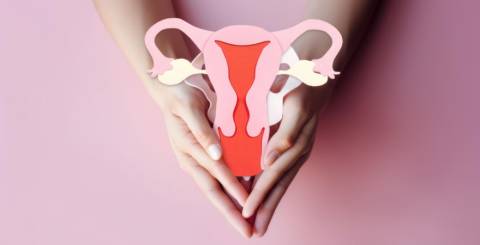Uterine Fibroids: Everything You Need to Know About This Common Condition

Uterine fibroids are one of the most common gynecological diseases that affect many women during their reproductive years. In this article, we will look at all aspects of this condition, including its causes, symptoms, diagnosis, treatment, and possible complications.
What are uterine fibroids?
Uterine fibroids, also known as leiomyomas, are benign tumors that develop from the smooth muscle of the uterus. These tumors can come in different sizes and shapes and often occur in women between their 30s and 50s. Fibroids can be single or multiple and can also be located in different parts of the uterus: inside, outside, or in the wall.
Causes of uterine fibroids
The causes of uterine fibroids are not fully understood, but research shows that it is a multifaceted process that includes genetic, hormonal, and environmental factors. Some of the suspected reasons include:
- Hormonal changes: Estrogen and progesterone, female sex hormones, play a key role in regulating the growth and functioning of the uterus. Excess estrogen and lack of progesterone can contribute to the development of fibroids.
- Genetic factors: Research shows that women who have relatives with uterine fibroids have a higher risk of developing this disease.
- Ethnicity: In women of African descent, uterine fibroids are more common and may have more severe symptoms.
- Lifestyle: Factors such as diet, physical activity level, and stress management may influence the development of uterine fibroids, although their role is not yet clear.
Symptoms of uterine fibroids
Symptoms of uterine fibroids can vary greatly depending on their size, number, and location. Some women may experience no symptoms at all, while others may experience the following:
- Heavy and long periods: Fibroids located inside the uterus can cause heavy bleeding during menstruation.
- Painful periods: Fibroids can cause painful cramping during menstruation (dysmenorrhea).
- Pain and discomfort in the lower abdomen: Tumors, especially large ones, can cause pressure and pain in the lower abdomen or lower back.
- Frequent urination: Fibroids located near the bladder may cause frequent urination or a feeling of needing to urinate.
- Increased pressure on the bladder or bowel: Large fibroids can put pressure on nearby organs, causing discomfort or problems with urination or bowel movements.
- Infertility or problems conceiving: Uterine fibroids can sometimes interfere with conception or cause problems during pregnancy.
Diagnosis and treatment of uterine fibroids
Diagnosis of uterine fibroids usually begins with a general examination by a gynecologist and various diagnostic procedures, such as ultrasound, magnetic resonance imaging (MRI), and several other methods.
The best treatment for uterine fibroids depends on many factors, including the patient's age, symptoms, size and number of tumors, and her desire to maintain or lose the possibility of pregnancy. Treatment options may include:
Watchful waiting
If the fibroid causes no or minor symptoms, your doctor may decide to simply observe the tumor and not take active treatment.
Pharmacological treatment
Drugs such as progesterone drugs, combined oral contraceptives, or drugs that block the action of estrogen may be prescribed to reduce symptoms such as heavy periods or pain.
Surgery
In cases where fibroids cause serious symptoms or complications, such as painful periods, infertility, or pressure on nearby organs, surgery may be required. Surgical methods may include myomectomy (removing only the tumor while preserving the uterus), hysterectomy (removing the uterus), or uterine artery embolization (blocking the blood supply to the tumor).
Minimally invasive procedures
There are also minimally invasive treatments for fibroids, such as myomectomy using laparoscopy or robotic surgery, which remove the tumor through small incisions, reducing recovery time and the risk of complications.
Treatment of neurological symptoms
In cases where fibroids cause neurological symptoms, such as lower back or leg pain, physical therapy, massage, or other methods may be prescribed to relieve discomfort.
The bottom line
Uterine fibroids are a common gynecological disease that can cause various symptoms and complications in women of reproductive age. It is important to contact your doctor at the first sign of a possible problem to receive timely diagnostic testing and treatment. Thanks to modern methods of diagnosis and treatment of uterine fibroids, it is possible to successfully control and improve a woman’s quality of life.
Similar Articles
You've probably heard the phrase "getting your tubes tied," if not "tubal ligation" (or "tubectomy")
Menstruation is a natural process, but for many women, it becomes a real challenge due to lower abdominal pain. Dysmenorrhea is a condition in which menstruation is accompanied by severe pain.
When it comes to breast reconstruction, misinformation spreads faster than a Wi-Fi signal at a coffee shop.
Choosing the right tampon is important for both comfort and health. With more women seeking eco-friendly products free from harmful chemicals, organic tampons have become a popular option. In this article, you will learn the eight essential tips provided to help you make an informed choice when buying organic tampons in retail stores.
If you have hip discomfort during perimenopause or beyond menopause, there may be a relationship. Reduced estrogen levels might raise your chance of getting gluteal tendinopathy. They may also contribute to osteoarthritis, which can damage several joints, including the hips.
Of the estimated total population having osteoporosis and osteoarthritis, 80% are women. One in two women over the age of 50 get serious fractures because of onset or severe osteoporosis. A bone injury at that age means serious length of recovery and difficulty in returning to normal mobility.
Breast lift surgery lifts the breasts, strengthens the tissue, and eliminates extra skin to boost elevation and better nipple positioning.
An enlarged vagina can occur as a result of unrelated events, such as the end of pregnancy or after sex. It can also be caused by vaginal irritation from wearing synthetic fabric underwear or a sexually transmitted disease such as genital herpes.
Polycystic ovarian disease (PCOD) is a hormonal disorder prevalent among women of reproductive age. It occurs when a woman's ovaries or adrenal glands produce higher-than-normal levels of male hormones, called androgens. This hormonal imbalance disrupts the menstrual cycle and leads to the formation of small cysts on the ovaries









